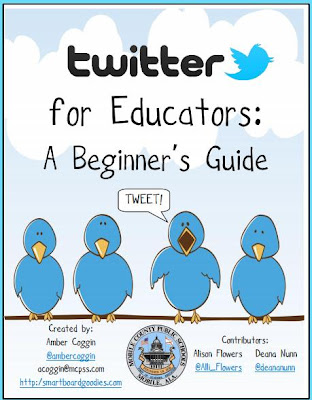 |
| Design. (2011). Uploaded to Tach @ Riverdale by Meg Krause. Available online at: http://blogs.riverdale.edu/techintegration/2011/11/26/understanding-by-design-the-backward-design-model/ |
Our presenters were actually from the Manitoba Rural Learning Consortium (mRLC) and are leading the Understanding by Design front in Manitoba. In early June, I blogged about the awesome resources that their website has available (check it out here). Our primary presenter, BarbGalessiere, not only works through the mRLC but is also a classroom and curriculum support teacher in the Hanover School Division. Not only was she very well-informed, but she was also an engaging presenter that brought humour into her content. Our secondary presenter, Greg Schettler, is a senior-years social studies teacher from Lord Selkirk School. Greg's adventure with Understanding by Design actually began in Saskatoon when he had an opportunity to attend a PD by Wiggins, McTighe, and Tomlinson!
As a first-year teacher, U.B.D is the only concept I was taught while I completed by Education Degree. As such, some of the information seemed quite repetitive but it was helpful to hear information explained in different contexts. There was also a lot of helpful handouts and resources that I was able to collect for future use! If the idea of U.B.D is brand-new to you, check out the video below:
The following is a random assortment of my notes and reflections from this session. I've tried to organize it to the best of my ability but I apologize if it seems a bit abstract!
Definitions
U.D.L
- Jennifer Katz from U of M
- Universal Design for Learning
- "Cadiallic model" of Backwards-By-Design but a hard place
to start from (multiple intelligences, differentiated instruction, etc)
U.B.D
- McTighe, Wiggins, Tomlinson
- Understanding by Design
- Backwards planning
- Used by the mRLC
___________________________________________________
Staff Questions from "S-School"
1) How is backwards by design different or better than what I currently do?
Traditional Planning:
- No Target or Unclear Final Target
- Didn't know where they are heading
- Assessment at the end
U.B.D
- Clear goals
- Continual assessment
- Three Levels of Learning
- Acquire: first stage CUT & PASTE
- Meaning: how do I use this knowledge
- Transfer: students take the knowledge and
transfer it to authentic situations outside of the classroom
(Big Idea, Compelling Why) CRITICAL THINKING
- Where do you want them to be as a thinker and a learner when
they are done; how will you know?
- Is your evidence GOOD evidence?
2) How is enduring understandings different than G.L.Os?
- Enduring understanding is a phrase the encompasses the majority of the
learning in a unit. All of the learning that occurs in the unit S.L.O's can
branch off of that enduring understanding
- A G.L.O is often smaller
- 40/40/40/40
- minutes, days, months, years
- enduring understandings should move to the right ALL the time
- don't focus on the "dessert", focus on the "meat" of the lesson
3) Variety of templates to coincide with teaching/learning styles?
- Use whatever format/template you want
- No right or wrong
- It is the stages that are important, not the look of it
___________________________________________________
*Can you answer, "Where will my son/daughter be at the end of this year?"
- Compelling "Whys", Essential Questions, and Enduring Understandings
ALL provide a context for learning
*Start units with projects, even if it is just the planning stage, students are
guaranteed to come back with lots of questions: they develop their own
compelling whys
Pyramid
- Largest, bottom-tier focused on meta-cognition
- Medium, middle-tier focused on formative assessment
- Smallest, top-tier focused on summative assessment
___________________________________________________
- Time
- Collaborative Opportunities
- Support
- Recognizing That These Are Working Documents - There are no U.B.D police
___________________________________________________
Identify Desired Learning
- What aspect of the curriculum are you focusing on in this plan?
- Where do you want students to be at the end of the unit?
Enduring Understanding/Big Idea/Purpose
- Enduring Understandings
- Usually one Enduring Understanding depending on subject/grade
- What are the big ideas?
- What specific understandings about them are desired?
- What misunderstandings are predictable?
- Goes beyond facts & focuses on big-picture concepts
- Can be applied to new situations in the subject or outside
- Essential Questions
- 2-5 Questions depending on the subject/grade
- Provides focus for the lesson
- Students will keep considering these questions...
- Leads to more questions
- Not yes or no answers
- Give meaning
- Acquisition
- Students will know...
- Students will be able to...
- What key knowledge (facts) will students acquire during this unit
in order to develop skills that can be transferred to outside situations?
STAGE TWO of Planning:
Determine Acceptable Evidence
- Performance Tasks
- What are the students going to do that allow you to assess a large
number of outcomes
- Summative Tasks
- What tasks will students complete to demonstrate the desired
understanding?
- Students should have a role, a criteria, and an outcome
- Not outcome-by-outcome assessment
- High Level Blooms
(ex) Grade 8 Social Studies: Why do we study civilizations?
- The product is just the vehicle that helps drive assessment towards
conversations and observations
- Other Evidence
- Often Formative Tasks
- Can be outcome-by-outcome
- Exit slips, quizzes, journals
- Low Level Blooms
___________________________________________________
- Enduring Understandings and Essential Questions ARE NOT
changed unless a student is actually modified through your resource
program
- When planning evidence in Stage Two, build in:
- Different reading levels
- Assessment varieties
- Resource-program supports
___________________________________________________
Check out this cute video I found while doing a YouTube search on U.B.D!
Does your school/division utilize Understanding by Design (U.B.D)?




.JPG)

.JPG)















